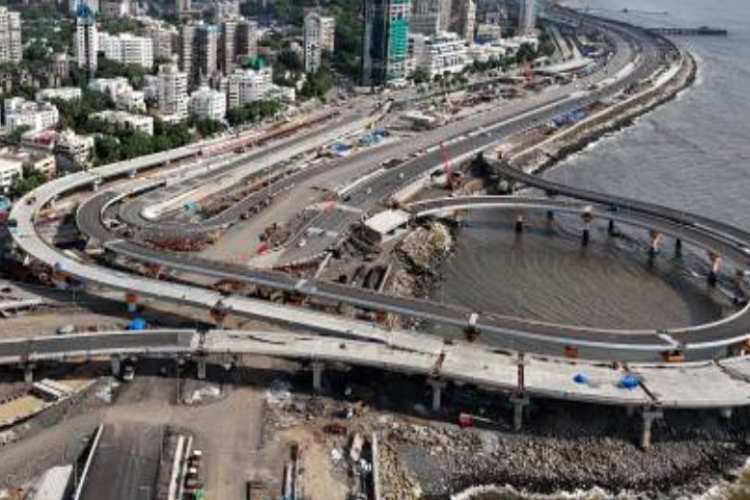
Capital expenditure has long been seen as the engine room of India’s growth story. Its impact extends far beyond immediate outlays — fuelling infrastructure expansion, catalysing industrial activity, and building the foundation for sustained economic momentum. With the 2025-26 Union Budget earmarking ₹11.21 lakh crore for capex, the government now faces the dual challenge of optimal allocation and rebalancing priorities. Roads and railways, which account for nearly 47% of this year’s outlay, may no longer be enough to maintain growth velocity.
Policymakers are preparing to recalibrate. The Centre is reviewing its infrastructure strategy to expand investments into under-funded sectors such as ports, shipbuilding, civil aviation, and urban infrastructure. This pivot stems from the growing realisation that marquee infrastructure ministries — especially roads and railways—could be approaching saturation, or may now require longer gestation periods for return on investment after years of sustained budgetary support.
READ | US-India trade deal nears; digital, dairy disputes weigh
Beyond highways and tracks
The post-Covid years witnessed a significant ramp-up in public investment across transport infrastructure. However, much of this expansion has been concentrated in a few headline sectors. As demand for diversified infrastructure grows—with ports requiring modernisation, urban transport networks under strain, and aviation infrastructure lagging demand—the need to broaden the investment canvas is evident.

Urban infrastructure, in particular, remains under-capacitated. India’s cities, expected to house over 600 million people by 2036, are already buckling under ageing drainage systems, collapsing flyovers, and water-stressed zones. In coastal states, port-led development has become essential not just for trade but also for reducing logistical inefficiencies. A broader capex thrust is also warranted in the aviation sector, which faces infrastructural bottlenecks despite booming passenger traffic.
Infrastructure gaps still haunt the economy
Despite being among the world’s five largest economies, India’s infrastructure remains below par. Each monsoon exposes systemic weaknesses — leaking public buildings, bridges collapsing under pressure, and highways washing away. Logistics costs remain high, primarily due to gaps in rural connectivity and port inefficiencies, undercutting industrial competitiveness.
The neglect is particularly stark in rural areas, where limited road connectivity and lack of storage infrastructure restrict access to markets. These deficiencies also affect agricultural supply chains and food security. Simultaneously, the underfunding of green infrastructure—solar power, storage systems, and electric mobility—has slowed India’s transition to a low-carbon economy. These gaps demand a course correction, not only to achieve climate targets but also to secure long-term economic resilience.
A plateau in private investment
The government has, over the past few years, hoped to nudge the private sector into reviving its capex appetite. That effort has yielded modest results. Private capital formation stood at about 33% of GDP in FY24, down from 37% in FY20, while the government and public sector undertakings now account for nearly 25%—a shift that reflects not just economic caution, but also policy inertia in crowding in private capital.
Global economic uncertainty, commodity price volatility, and supply chain disruptions have likely contributed to this hesitancy. However, the reasons for subdued private investment run deeper—possibly tied to regulatory hurdles, weak demand visibility, or a risk-averse corporate mindset. A detailed diagnostic is overdue. The government, meanwhile, appears to be exploring whether further “policy imperatives” are needed to de-risk private capex and incentivise long-term bets.
Capital expenditure: Momentum must not stall
There are early signs of commitment. In the first two months of FY26, the government spent ₹2.21 lakh crore in capital outlays—19.7% of the full-year allocation—marking a sharp rise from ₹1.43 lakh crore in the same period last year. The Ministry of Railways spent 21% of its allocation (₹52,073 crore) in April-May, while the Ministry of Road Transport and Highways disbursed ₹59,638 crore or 22% of its budget estimate. These are encouraging signals, especially at a time when capex tends to be backloaded in most years.
Yet there are concerns that capex growth may taper off as the fiscal year progresses. Monsoon-related project delays are understandable, but the government must ensure that this does not translate into a broader slowdown. High-frequency indicators, such as cement and steel production, as well as project pipeline announcements, must be closely tracked to avoid slippage.
The case for capex multiplier
Capex carries a well-established multiplier effect—estimated by the Reserve Bank of India to be between 2.2 and 2.5 over the medium term. It boosts employment not only through direct construction activity but also across supply chains—steel, cement, logistics, and machinery. As Finance Minister Nirmala Sitharaman has frequently noted, investment in productive infrastructure generates lasting value, unlike pure transfers or consumption-linked subsidies.
This is especially true for state governments, which are encouraged to utilise the Centre’s Special Assistance to States for Capital Expenditure (SASCE) scheme to spur localised infrastructure, employment, and service delivery. In the past, delays in fund disbursals and project readiness have diluted the scheme’s effectiveness. This time, both central and state governments must ensure faster execution.
The Centre’s decision to rethink its capex strategy comes not a moment too soon. An EY report recently flagged the restoration of infrastructure expansion as the key fiscal policy priority for FY26, along with a calibrated return to fiscal consolidation. The broader policy consensus now favours continued public spending to buffer the economy from global headwinds, while positioning India for long-term competitiveness.
India stands at an inflection point. Its economic possibilities are many, but their realisation depends on the depth and quality of its infrastructure backbone. A smarter, broader, and more agile capex strategy is no longer optional—it is imperative.
